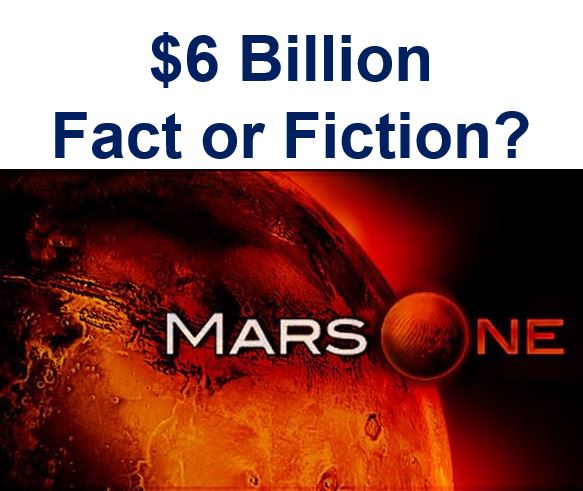How can a mission get 20 people to Mars, create a permanent colony within the next ten years, and keep them there for the rest of their lives – for just $6 billion? This is a question a growing number of lay people are starting to ask, and most scientists see as either a pipe dream or a giant scam.
Mars One CEO Bas Lansdorp has attempted to address strong criticism in the press, Internet and TV over the last week about the feasibility of the mission and the $6 billion estimated budget to see it through.
Mr Lansdorp insists Mars One is a feasible, honorable, and well-budgeted project that will definitely happen.

Mr. Lansdorp insists he can get 20 people to Mars and build a permanent colony there – all for just $6 billion.
Critics say the whole idea is impossible, and point to NASA’s estimate of up to $100 billion to complete such a project, and definitely not within the next ten years.
Press criticism over the past week, Mr. Landsdorp explains, is all sourced from just one article by journalist Elmo Keep. He describes her article as ‘sensational’ and devoid of actual facts.
Former NASA researcher, Dr. Joseph Roche, an astrophysicist at Trinity College’s School of Education in Dublin, spoke with Elmo Keep of Medium’s matter blog. He listed a string of shortcomings in the mission.
According to Dr. Roche, candidates earn points to go higher up the ‘likelihood of being selected’ ladder. If you buy lots of Mars One merchandise you gain more points, as you do if you donate all or some of your interview fees to the mission organizers.
While welcoming ‘good criticism’ as a way of helping him and his team improve the mission, Mr. Lansdorp said in an interview (see video below) that what Ms. Keep reported last week contained several things that were just ‘not true’.

Bas Lansdorp says recent criticisms are based on inaccurate data.
The selection process is vigorous, Lansdorp insists
Among the many criticism cited by the media over the past week has been that the selection process is dependent on how much candidates donate to Mars One, with some journalists commenting that the whole thing was starting to look like a cult-type set up to get money from gullible people.
Mr. Lansdorp points out that many candidates who were donors had not been selected to the shortlist of 20, while some in that final group gave no gifts at all. He said all this can be verified on the Mars One website.
He added that candidates are welcome to donate interview money to the mission, as well as giving their own money if they want to. However, he insisted that it was their decision entirely.
Mars One said 200,000 people applied to become candidates to go to Mars, but Ms. Keeps reported there were only 2,700. Mr. Lansdorp says she got that information from an inaccurate NBC News article, which has since been taken down.
Regarding the number of applicants, Mr. Lansdorp said:
“We have offered Elmo keep as the first journalist ever to have access to our list of 200,000 applications. She wasn’t interested in that, so it seems to me that she is more interested in writing sensational article about Mars One than in the truth”
Critics all over the world said the selection process was far from satisfactory. Mr. Lansdorp claimed they were basically the same as NASA’s medical checks used for selecting suitable astronauts.
Costing
According to Mars One, transporting 20 people from Earth to Mars, plus building a colony there will cost just $6 billion.
Mr. Landsdorp pointed out that NASA’s estimate, which he says is $30 billion, includes bringing the astronauts back to Earth. That is why the Mars One mission is cheaper – there are no return-voyage costs.
One does wonder, however, how setting up the infrastructure for a permanent colony of 20 people in the hostile environment of the Red Planet, could cost just $6 billion – and that includes the Mars One spacecraft to get them there, plus the scouting probe that is supposed to be taking off from Earth in 2018.
The 2018 robotic scouting mission is another mystery. It is now less than three years away, and still there are no signs the organization has been in talks with any aerospace companies or suppliers regarding this.
Video – Mars One Mission, Q&A
